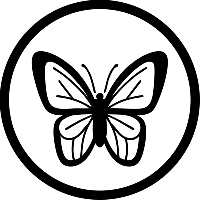Delphinium, Siberian Larkspur 'Blue Mirror'




Out of stock
Coming soon, still growing- Sun Preference
- Full-Sun, Part-Sun
- Bloom Time
- June, July
Description
A classic cottage garden perennial in gorgeous shades of white, blue, purple, and rose. This plant thrives in well-drained soil and will re-bloom dependably in fall if cut back after the first bloom.
Blue Mirror Larkspur (Delphinium) is a generous bloomer with a bushy habit and bright marine blue flowers. Blooms from June through July.
Minnesota's Largest Selection of Perennials
Discover an unparalleled selection of perennials at Gertens! With the largest variety in Minnesota, we offer endless options of colorful perennials, natives, and pollinator plants to beautify your garden year after year. From vibrant flowers to lush foliage, our perennials are perfect for adding beauty and charm to your outdoor space. Visit Gertens today and see why we're known as Minnesota's Destination Garden Center!
Details
Delphinium grandiflorum ‘Blue Mirror’ | Blue Mirror Delphinium
Height: 18 inches
Spacing: 10 inches
Sunlight: ![]()
Hardiness Zone: 3a
Other Names: Dwarf Larkspur
Description:
Magnificent variety displays electric blue flowers on a mounded plant; a perfect selection for smaller places in the garden, put in containers and along borders
Ornamental Features
Blue Mirror Delphinium has masses of beautiful panicles of blue flowers with violet overtones at the ends of the stems from early summer to early fall, which are most effective when planted in groupings. The flowers are excellent for cutting. Its crinkled ferny compound leaves remain dark green in color throughout the season. The fruit is not ornamentally significant.
Landscape Attributes
Blue Mirror Delphinium is an herbaceous perennial with a mounded form. It brings an extremely fine and delicate texture to the garden composition and should be used to full effect.
This plant will require occasional maintenance and upkeep, and should be cut back in late fall in preparation for winter. It is a good choice for attracting bees, butterflies and hummingbirds to your yard. Gardeners should be aware of the following characteristic(s) that may warrant special consideration;
- Insects
- Disease
- Self-Seeding
Blue Mirror Delphinium is recommended for the following landscape applications;
- Mass Planting
- Rock/Alpine Gardens
- Border Edging
- General Garden Use
- Container Planting
Planting & Growing
Blue Mirror Delphinium will grow to be about 15 inches tall at maturity, with a spread of 15 inches. When grown in masses or used as a bedding plant, individual plants should be spaced approximately 10 inches apart. It grows at a medium rate, and under ideal conditions can be expected to live for approximately 3 years.
This plant should only be grown in full sunlight. It prefers to grow in average to moist conditions, and shouldn't be allowed to dry out. It is not particular as to soil type or pH. It is somewhat tolerant of urban pollution. This is a selection of a native North American species. It can be propagated by division; however, as a cultivated variety, be aware that it may be subject to certain restrictions or prohibitions on propagation.
Blue Mirror Delphinium is a fine choice for the garden, but it is also a good selection for planting in outdoor pots and containers. It is often used as a 'filler' in the 'spiller-thriller-filler' container combination, providing a mass of flowers against which the thriller plants stand out. Note that when growing plants in outdoor containers and baskets, they may require more frequent waterings than they would in the yard or garden. Be aware that in our climate, most plants cannot be expected to survive the winter if left in containers outdoors, and this plant is no exception. Contact our store for more information on how to protect it over the winter months.
| SKU | Container Size |
| P1498 | #1 Container (1 Gallon) |
* Not all container sizes may be available at this time. See store for details on specific container size availability.
More Information
| Common Family Name | Larkspur |
|---|---|
| Gerten Grown Plants | Gerten Grown Plants |
| Sun Preference | Full-Sun, Part-Sun |
| Bloom Time | June, July |
| Mature Spread (Range) | 12" - 24" |
| Mature Height (Range) | 13" - 24" |
| USDA Hardiness Zone | 3, 4, 5, 6, 7 |


